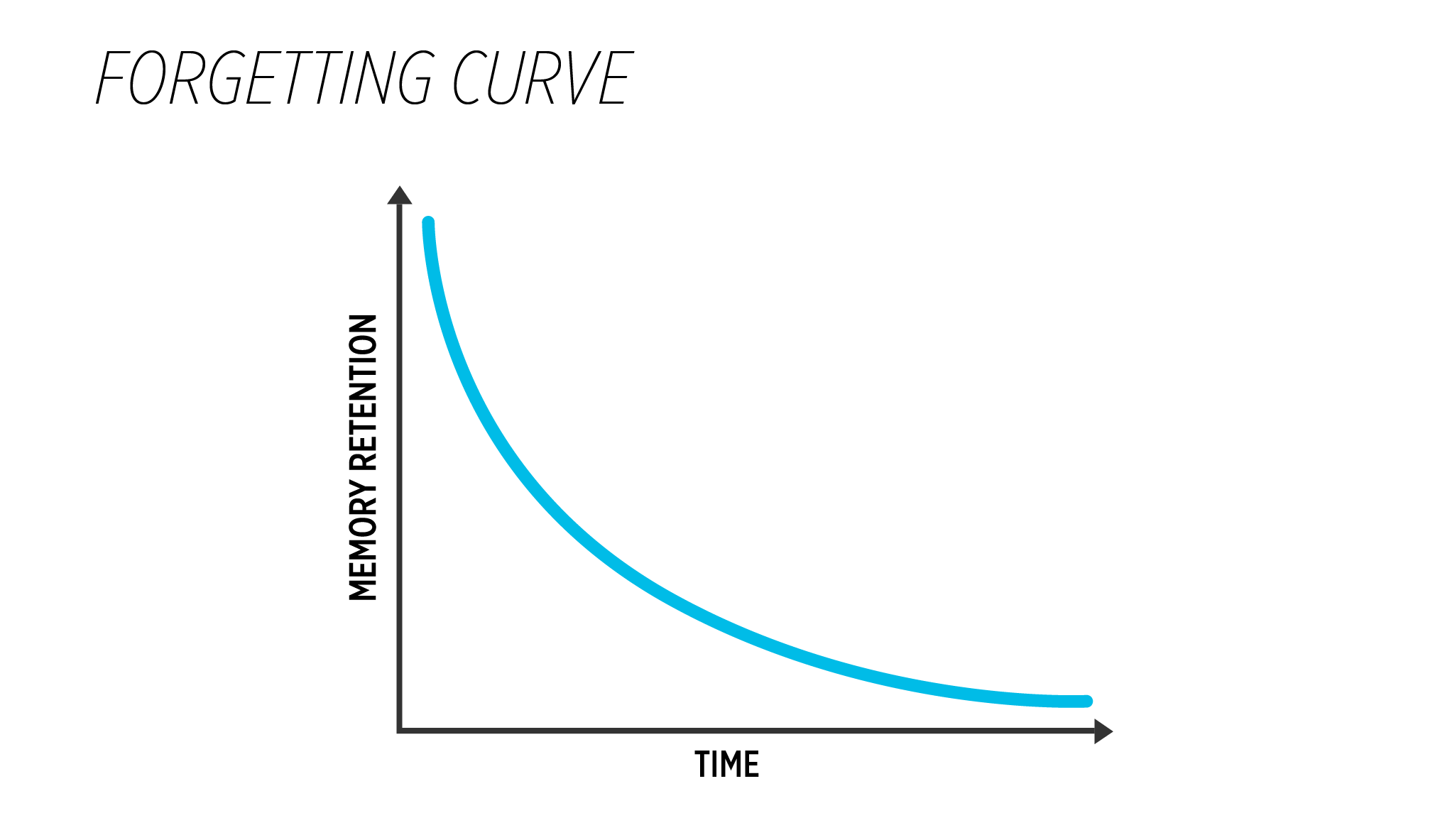Training professionals have for many years, dealt with the challenge of improving the learners’ retention after they leave the classroom or online training experience.
The problem has been recognized due to the idea that students forget information they have been exposed to during the training experience. This issue was hypothesized and studied by German psychologist Hermann Ebbinghaus in 1885. His discovery was that information is exponentially forgotten from the time learners consume it.
The forgetting curve demonstrates the decline of memory retention in time — how information is lost over a period when there is no attempt to retain it.
A related concept is the strength of memory that refers to the durability, which memory traces in the brain. Basically, the stronger the memory, the longer the period of time that a person is able to recall it.
A typical graph of the forgetting curve shows that humans tend to halve their memory of newly learned knowledge in a matter of days or weeks unless they consciously review the learned material.
The forgetting curve supports one of the seven kinds of memory failures: transience – the process of forgetting occurring with the passage of time. Ebbinghaus studied the memorization of nonsense syllables, such as “WID” and “ZOF.” And, by repeatedly testing himself after various time periods and recording the results, he became the first to describe the shape of the forgetting curve.
The Speed of Forgetting
The speed of forgetting depends on a number of factors, such as the difficulty of the learned material, for example, how meaningful it is, its representation, and physiological factors such as stress and sleep.
The basal forgetting rate differs little between individuals, and the difference in performance can be explained by mnemonic representation skills.
Increasing Memory Strength
Basic training in mnemonic techniques can help overcome those differences in part. However, the best methods for increasing memory strength are:
- Better memory representation (using mnemonic techniques).
- Repetition based on active recall (spaced repetition).
Ebbinghaus asserted that each repetition in learning increases the optimum interval before the next repetition is needed (for near-perfect retention, initially repetitions may need to be made within days, but later they can be made after years).
The Memory Debate
There is some debate among current researchers about the shape of the curve for events and facts that are more significant to the subject. For example, some researchers have suggested that memories for shocking events such as the Kennedy Assassination or the terrorist attacks on 9/11 are vividly imprinted in memory (flash bulb memory).
Other researchers have compared contemporaneous written recollections with recollections recorded years later, and found considerable variations as the subject’s memory incorporates after-acquired information. There is considerable research in this area as it relates to eyewitness identification testimony.
For example, most students remember only 10% of a typical schoolbook application such as learning word pairs after three days. Thus, proving that 90% of what was learned is often forgotten.
Related Content on TrainingIndustry.com:
- Making Learning Stick: 5 Practical Best Practices
- Improving Retention and Application With Continuous Learning Journeys
- Sustaining the Impact of a Great Training Program

